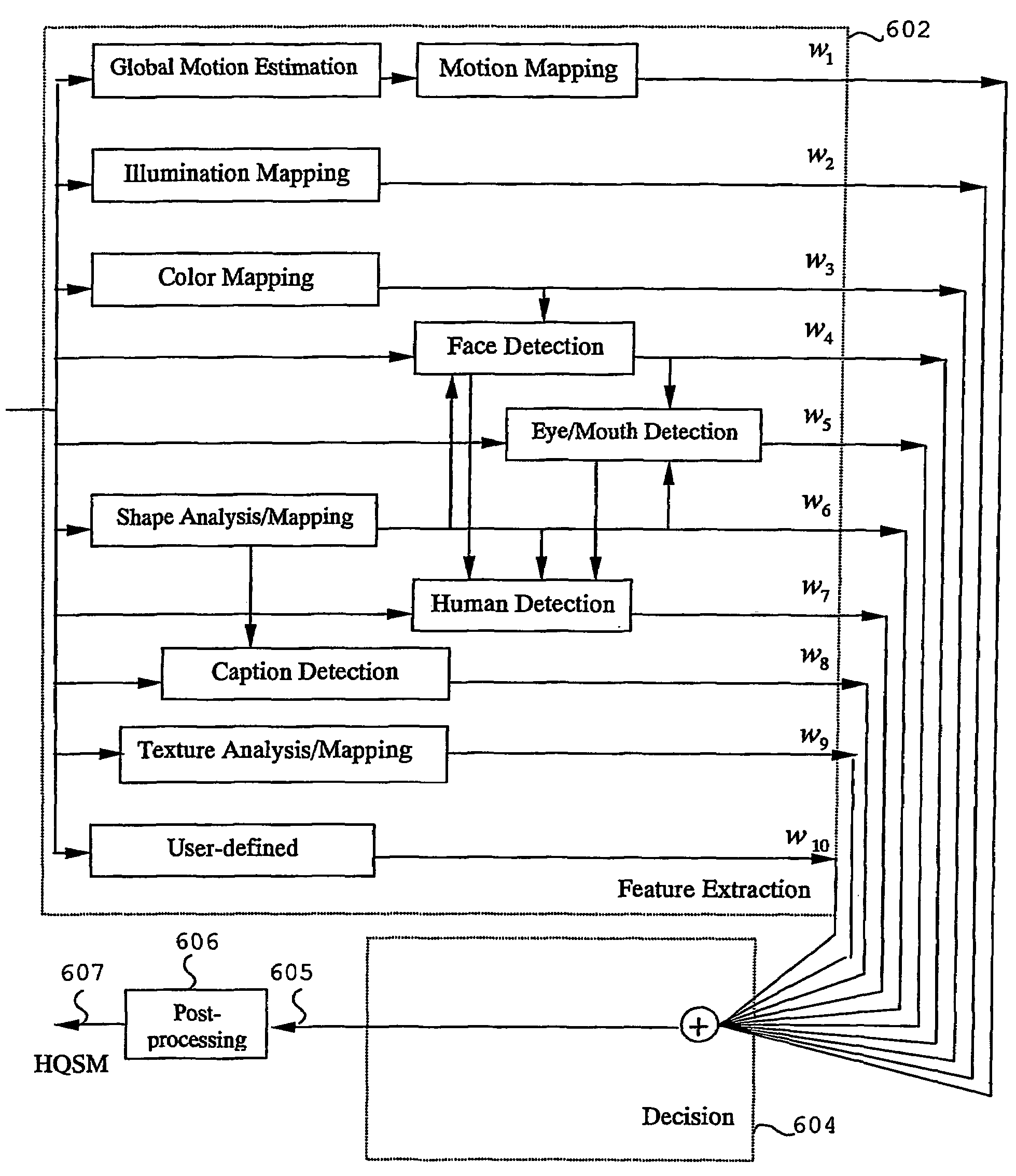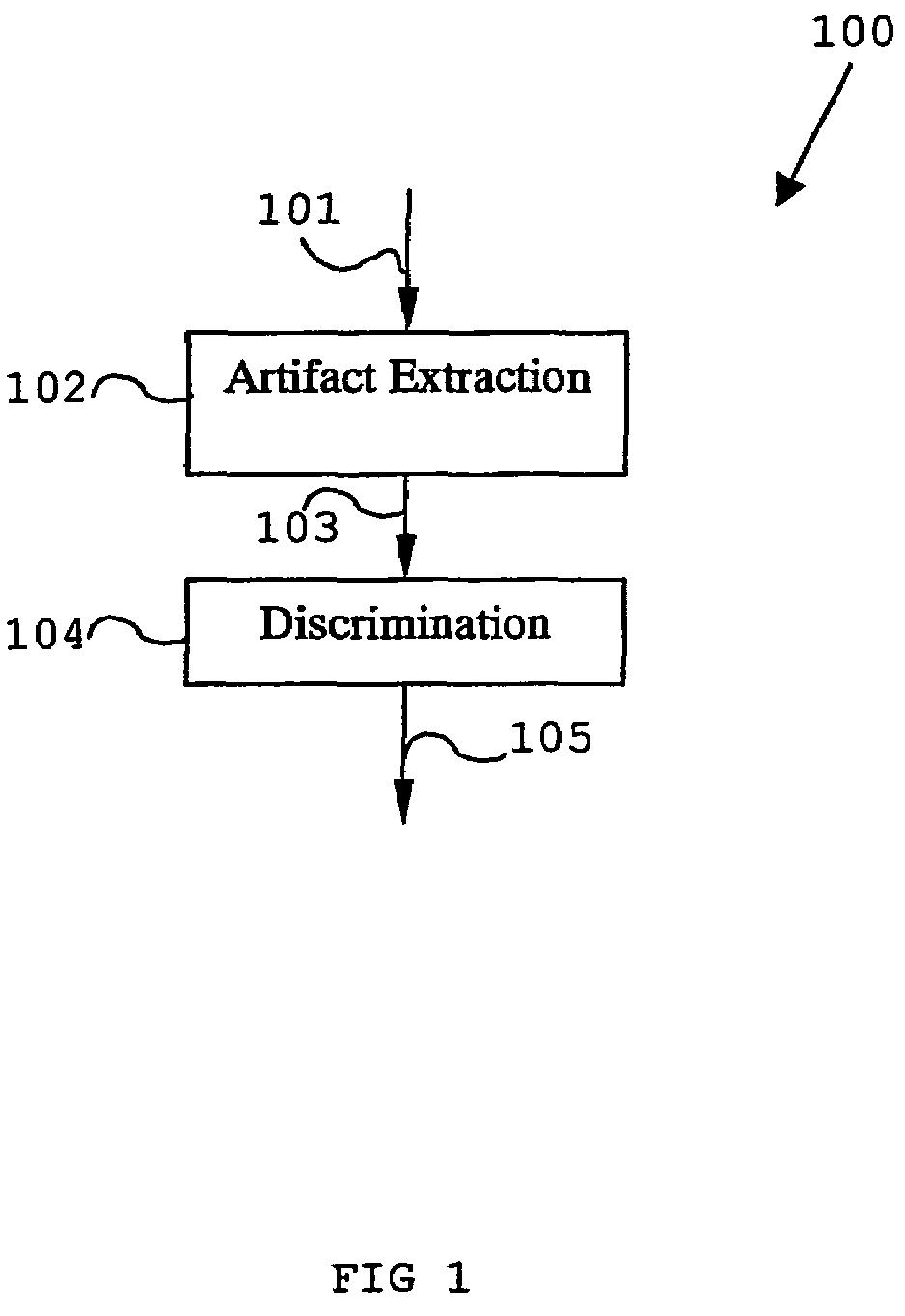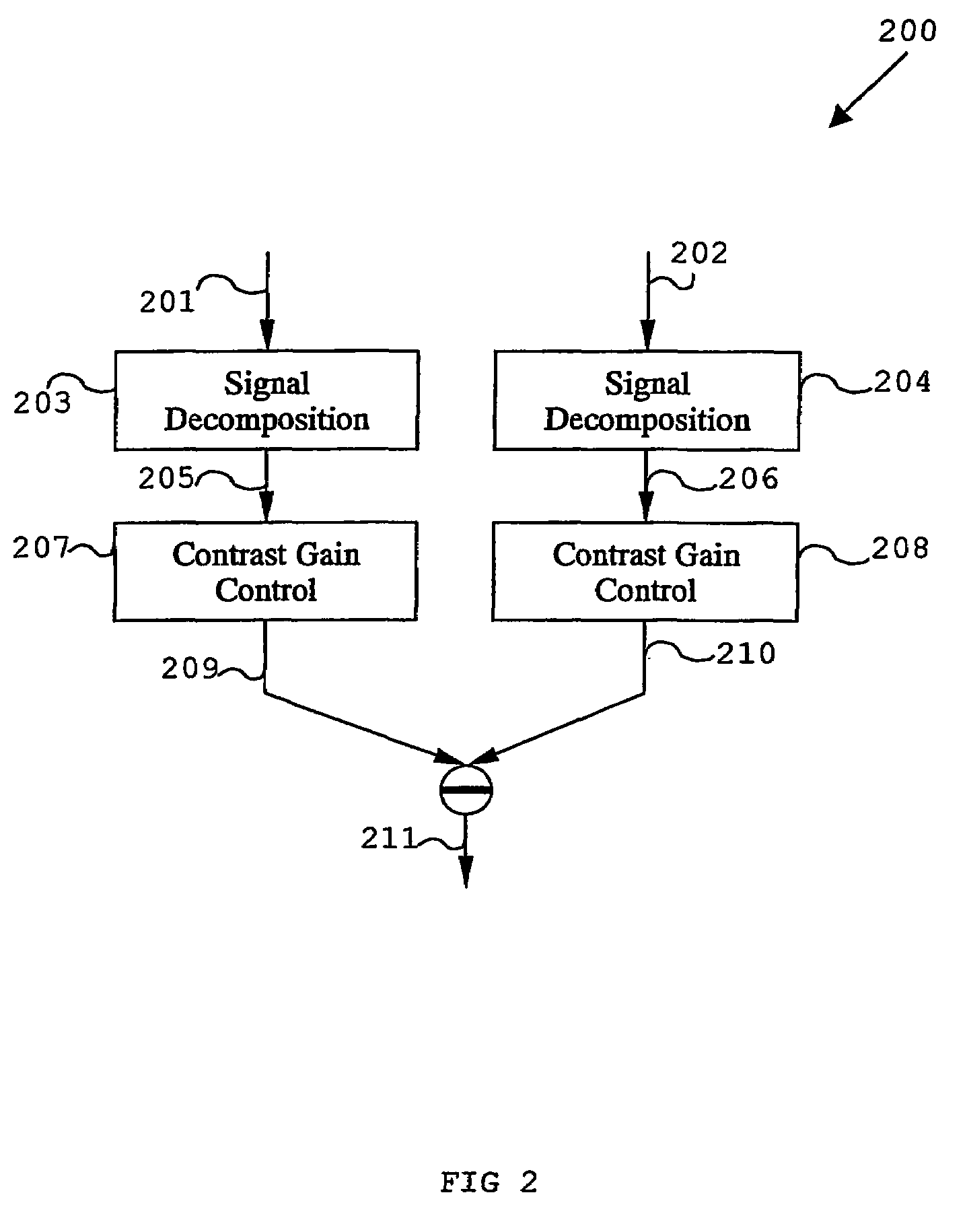Method for generating a quality oriented significance map for assessing the quality of an image or video
a technology of image or video quality and significance, applied in the field of generating a quality oriented significance map for assessing the quality of an image or video, can solve the problems of not providing results close to human perception, performance of the second class approach is still not satisfactory, and achieves the effect of improving performan
- Summary
- Abstract
- Description
- Claims
- Application Information
AI Technical Summary
Benefits of technology
Problems solved by technology
Method used
Image
Examples
Embodiment Construction
[0054]FIG. 4 describes a general system for monitoring quality of video for a broadcasting system.
[0055]An image / video source 401 is encoded in an encoder unit 402 and the encoded image / video 403 is transmitted over a Wide Area Network (WAN) 404. The transmitted image / video 405 from the WAN 104 is received by a decoder unit 106 to be decoded.
[0056]A distortion metrics unit 410 receives the decoded image / video 407 from the decoder unit 406 with / without a reference image / video 408. The reference image / video 408 is generated from an image / video source unit 409, wherein the image / video source unit 409 may be identical to an image / video source unit used to generate the original image / video 401, or the reference image / video 408 may be simply extracted from the original image / video 401 which was encoded in the encoder unit 402.
[0057]Generally, distortion metrics can be categorized into Full Reference (FR), Reduced Reference (RR) and No Reference (NR) models. FR metrics performs pixel-by-pi...
PUM
 Login to View More
Login to View More Abstract
Description
Claims
Application Information
 Login to View More
Login to View More - R&D
- Intellectual Property
- Life Sciences
- Materials
- Tech Scout
- Unparalleled Data Quality
- Higher Quality Content
- 60% Fewer Hallucinations
Browse by: Latest US Patents, China's latest patents, Technical Efficacy Thesaurus, Application Domain, Technology Topic, Popular Technical Reports.
© 2025 PatSnap. All rights reserved.Legal|Privacy policy|Modern Slavery Act Transparency Statement|Sitemap|About US| Contact US: help@patsnap.com



